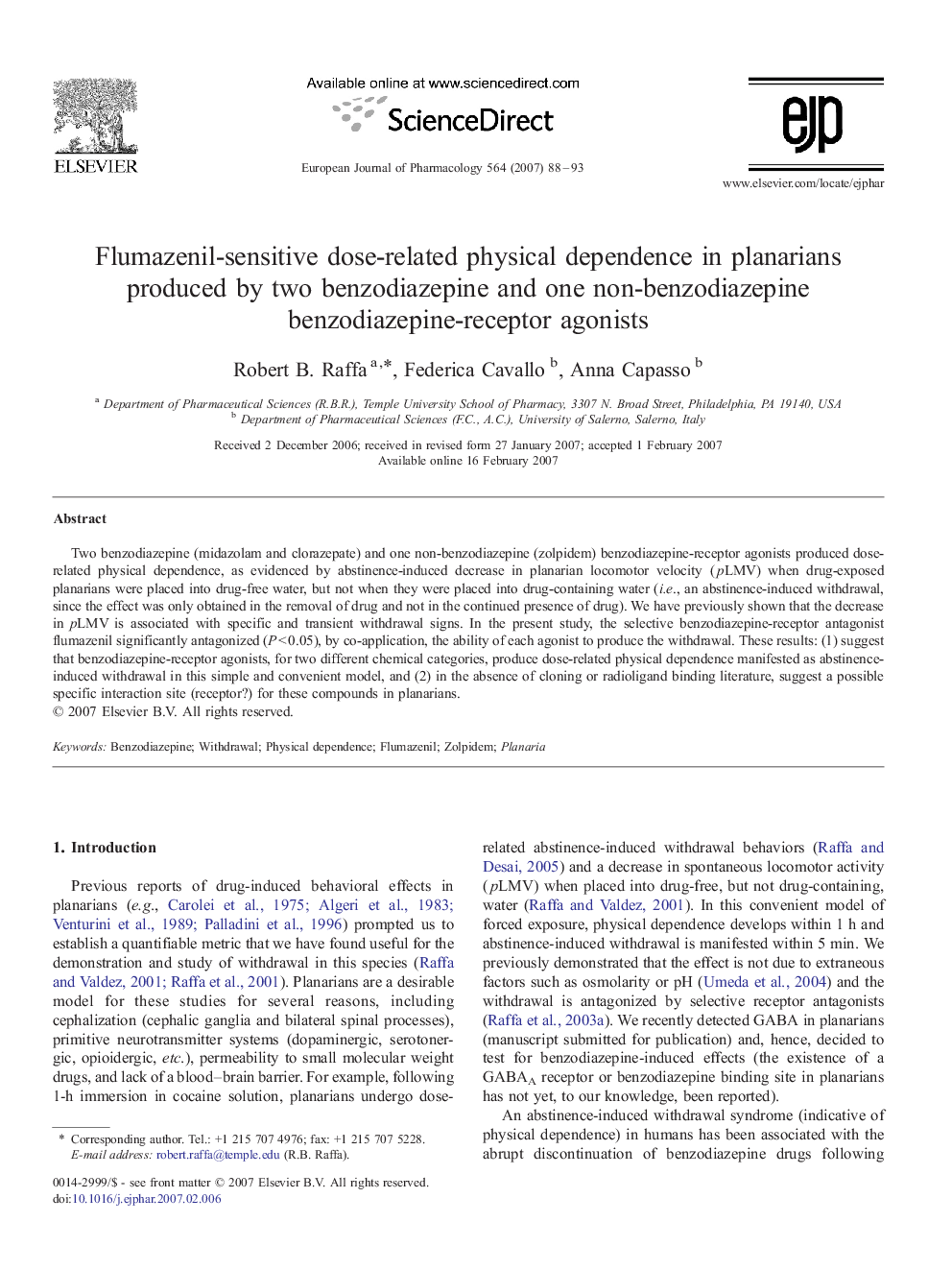| Article ID | Journal | Published Year | Pages | File Type |
|---|---|---|---|---|
| 2536147 | European Journal of Pharmacology | 2007 | 6 Pages |
Abstract
Two benzodiazepine (midazolam and clorazepate) and one non-benzodiazepine (zolpidem) benzodiazepine-receptor agonists produced dose-related physical dependence, as evidenced by abstinence-induced decrease in planarian locomotor velocity (pLMV) when drug-exposed planarians were placed into drug-free water, but not when they were placed into drug-containing water (i.e., an abstinence-induced withdrawal, since the effect was only obtained in the removal of drug and not in the continued presence of drug). We have previously shown that the decrease in pLMV is associated with specific and transient withdrawal signs. In the present study, the selective benzodiazepine-receptor antagonist flumazenil significantly antagonized (PÂ <Â 0.05), by co-application, the ability of each agonist to produce the withdrawal. These results: (1) suggest that benzodiazepine-receptor agonists, for two different chemical categories, produce dose-related physical dependence manifested as abstinence-induced withdrawal in this simple and convenient model, and (2) in the absence of cloning or radioligand binding literature, suggest a possible specific interaction site (receptor?) for these compounds in planarians.
Related Topics
Life Sciences
Neuroscience
Cellular and Molecular Neuroscience
Authors
Robert B. Raffa, Federica Cavallo, Anna Capasso,
